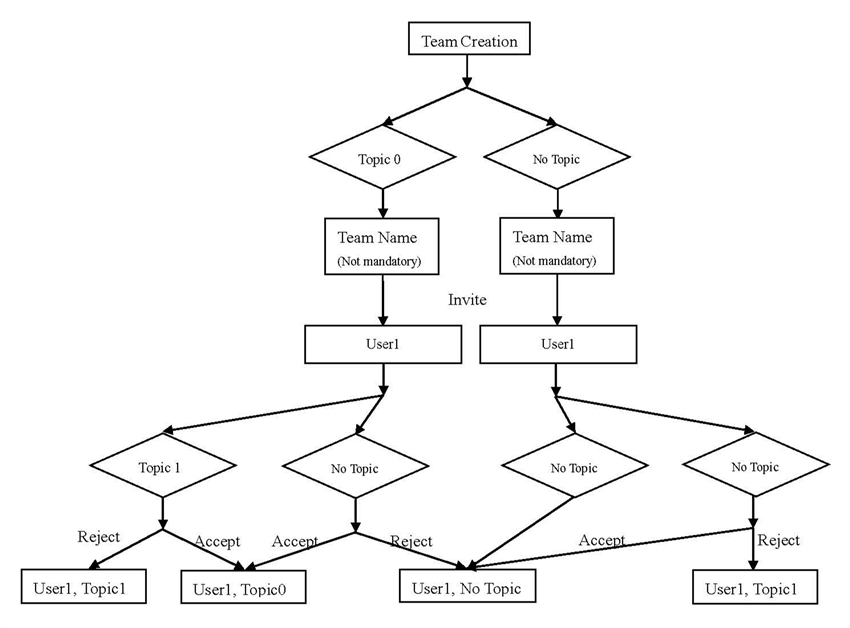CSC/ECE 517 Fall 2015 E1590 Integration testing for Team creation
Purpose
This project is to perform integration testing for team creation. The testing needs to be done with the help of RSpec and Capybara. The UI procedures need to be tested are:
- Log in as a student
- Choose a available topic
- Invite one or more students as teammates
- Students who get the invition could accept or denial
- After accept the invitation, the team should form and all teammates should have same topic
Background
RSpec
Rspec <ref>RSpec Wiki Page</ref> is a behavior-driven development (BDD) framework for the Ruby programming language, inspired by JBehave.[4] It contains its own mocking framework that is fully integrated into the framework based upon JMock. The framework can be considered a domain-specific language (DSL) and resembles a natural language specification.In this project we will use expectation part of RSpec at most time.
- rspec-expectations<ref>[1]</ref>
- RSpec::Expectations lets you express expected outcomes on an object in an example
- rspec-rails<ref>[2]</ref>
- rspec-rails is a testing framework for Rails 3.x and 4.x..
Capybara
Capybara is a web-based automation test tool that simulates a real user to follow the scenarios of user stories.<ref>Capybara on GitHub</ref> It could interact with app to receive pages, parse the HTML and submit forms as a user would.<ref>Introducing cucumber & capybara on YouTube</ref> Used with RSpec and Ruby on Rails (version 1.9 or later), capybara makes it easier to write integration tests. <ref>Using Capybara in Rails 3</ref> It is used on the top of an underlying web-based driver and offers a user-friendly DSL (Domain Specific Language) to describe actions executed by the underlying web driver. Such as rack::test, selenium-webdriver and capybara-webkit.<ref>The Basics of Capybara and Improving Your Tests</ref>
In this project, we use capybara with RSpec by adding the following line:
require 'capybara/rspec'
Then put capybara specs in spec/features.
Integration test
Integration test is a software testing definition that we combine modules then test them as one group. It is an important application testing way. It is always adapted after unit testing, we need to combine different units to test the functionalities and verify that the aggregated group could deliver its output properly. The purpose of an integration test is to verify the functionality of interface between integrated parts, also we can know the performance of the subsystems. The integration testing has two types, big bang top down and bottom up.
- Big Bang
In this type, since all the application is combined with all major usage modules. So we test them under usage model testing, which means we can simulate the users' acts under testing environment. When doing this, we can test if all the expected components is got when we actually do the same way under production environment. It is an effective way to test the functionalities and got better coverage since we are creating the realistic scenarios. It will make sure the application can have proper output when a user does the same input.
- Top down and Bottom up
Top down and bottom up is another type of integration testing. For top down, we test the top integrated module firstly and test the ranch of it again and again, then we can test all the related modules finally. For Bottom up way, we test the most basic module at first and check the module that containing this basic module. The advantage of it is that we can find the bug easier because we will not miss any branch that we use. However, it is time consuming in this way.<ref>Integration testing on Wikipedia</ref>
Testing
Based on the project requirements, the testing can be divided into the following parts:
T1. Ensure a student is able to login to the system.
T2. Ensure a student is able to choose a topic from the assignment.
T3. Ensure a student is able to form a team by inviting other students enrolled in this course.
S1. If the invitation is sent to a student who isn't enrolled in the class, it should not be allowed. S2. If the invitation is sent to a student who is enrolled in the class, it should be allowed.
T4. Ensure an invitee is able to accept or reject.
T5. Ensure all teammates have the same topic.
S1. If a student accepts the invitation and the student have a topic before, the topic should be dropped. S2. If a student accepts the invitation and did not have the topic before, the student should have the same topic as other teammates who accepted the invitation.
Scenario
References
<references></references>
